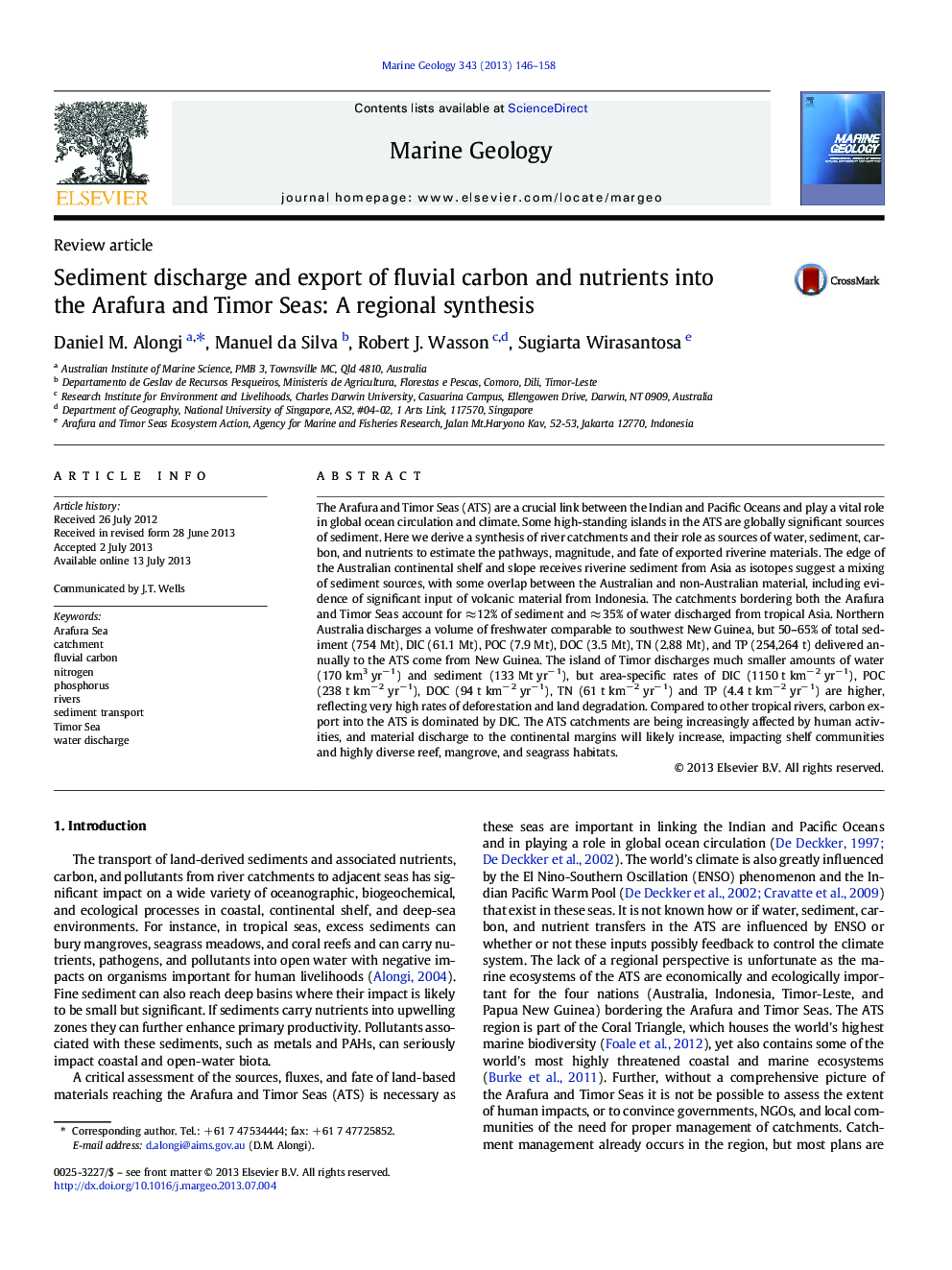| کد مقاله | کد نشریه | سال انتشار | مقاله انگلیسی | نسخه تمام متن |
|---|---|---|---|---|
| 6441724 | 1639109 | 2013 | 13 صفحه PDF | دانلود رایگان |
عنوان انگلیسی مقاله ISI
Sediment discharge and export of fluvial carbon and nutrients into the Arafura and Timor Seas: A regional synthesis
ترجمه فارسی عنوان
تخلیه رسوب و صادرات کربن فلوولی و مواد مغذی به دریاهای آفرورا و تیمور: یک سنتز منطقه ای
دانلود مقاله + سفارش ترجمه
دانلود مقاله ISI انگلیسی
رایگان برای ایرانیان
کلمات کلیدی
دریای آفروا، حوضچه کربن رقیق نیتروژن، فسفر، رودخانه ها، حمل و نقل رسوب، دریای تیمور تخلیه آب،
موضوعات مرتبط
مهندسی و علوم پایه
علوم زمین و سیارات
ژئوشیمی و پترولوژی
چکیده انگلیسی
The Arafura and Timor Seas (ATS) are a crucial link between the Indian and Pacific Oceans and play a vital role in global ocean circulation and climate. Some high-standing islands in the ATS are globally significant sources of sediment. Here we derive a synthesis of river catchments and their role as sources of water, sediment, carbon, and nutrients to estimate the pathways, magnitude, and fate of exported riverine materials. The edge of the Australian continental shelf and slope receives riverine sediment from Asia as isotopes suggest a mixing of sediment sources, with some overlap between the Australian and non-Australian material, including evidence of significant input of volcanic material from Indonesia. The catchments bordering both the Arafura and Timor Seas account for â 12% of sediment and â 35% of water discharged from tropical Asia. Northern Australia discharges a volume of freshwater comparable to southwest New Guinea, but 50-65% of total sediment (754 Mt), DIC (61.1 Mt), POC (7.9 Mt), DOC (3.5 Mt), TN (2.88 Mt), and TP (254,264 t) delivered annually to the ATS come from New Guinea. The island of Timor discharges much smaller amounts of water (170 km3 yrâ 1) and sediment (133 Mt yrâ 1), but area-specific rates of DIC (1150 t kmâ 2 yrâ 1), POC (238 t kmâ 2 yrâ 1), DOC (94 t kmâ 2 yrâ 1), TN (61 t kmâ 2 yrâ 1) and TP (4.4 t kmâ 2 yrâ 1) are higher, reflecting very high rates of deforestation and land degradation. Compared to other tropical rivers, carbon export into the ATS is dominated by DIC. The ATS catchments are being increasingly affected by human activities, and material discharge to the continental margins will likely increase, impacting shelf communities and highly diverse reef, mangrove, and seagrass habitats.
ناشر
Database: Elsevier - ScienceDirect (ساینس دایرکت)
Journal: Marine Geology - Volume 343, 1 September 2013, Pages 146-158
Journal: Marine Geology - Volume 343, 1 September 2013, Pages 146-158
نویسندگان
Daniel M. Alongi, Manuel da Silva, Robert J. Wasson, Sugiarta Wirasantosa,
